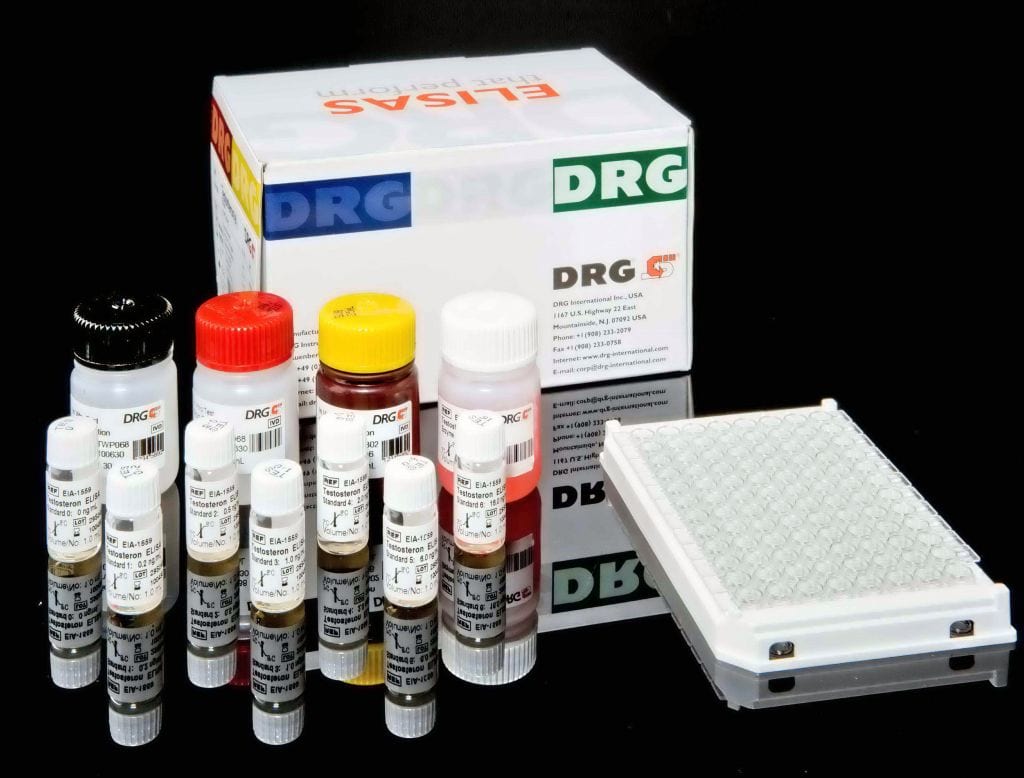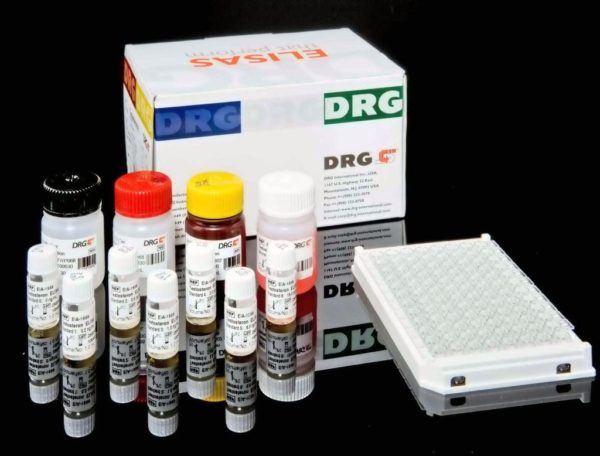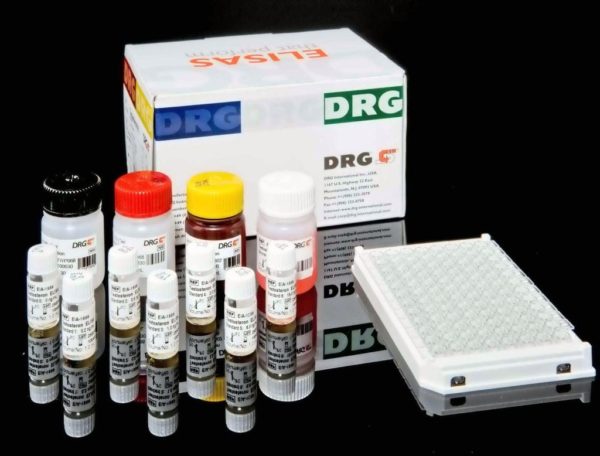Description
The DRG Toxoplasma gondii IgM Enzyme Immunoassay Kit provides materials for the quantitative and qualitative determination of IgM-class antibodies to Toxoplasma gondii in human serum and plasma.This assay is intended for in vitro diagnostic use only.Toxoplasma gondii is a small intracellular parasite, whose life cycle has a sexual and an asexual phase. Sexual development is restricted to the intestinal cells of (probably exclusively) cats; the oocysts formed are excreted and due to their resistant cell walls they may be infectious under advantageous circumstances for at least 1 year. Animals and man are intermediate hosts for the asexual proliferation of T. gondii: the ingested parasites will proliferate explosively within the host cells lysing them eventually. They disseminate throughout the body via circulation and lymphatic system and may infect any cell type. About half of the Toxoplasma infections process clinically inaparent. The other Toxoplasma infections show often only unspecific symptoms, after an incubation time from one to three weeks with lightly fever, exhaustion, headaches well as muscle and joint pain. Complications in the form of myocarditis, meningitis or pneumonia occur at 1% of infected children and young adults respectively. After recovery, Toxoplasma gondii cells persists in infected tissues by forming cysts which are resistant to the attacks of the immune system. In immunocompetent individuals the latent infection does not reactivate. After suppression of the immune system, activation of latent infections has been observed and can lead to severe complications. An infection at any stage during pregnancy may result in the transplacental transmission of the parasite to the fetus although the timing of such a transfer does have an effect on the clinical outcome for the fetus.
1. Trimester: 17% _ most often aborted, seldom severe damage to the unborn2. Trimester: 24% _ moderate or severe damage to the fetus3. Trimester: 64% _ mild damage or damage appears later in life
When maternal primary infection is detcted and subsequently eradicated by chemotherapy, the risk for transmission to the fetus is decreased by about 75%. In AIDS patients, Toxoplasma encephalitis is of significant importance as the cause of death.
Interpretation der Ergebnisse: Negative results for Toxoplasma gondii IgG by ELISA indicate a lack of immunity but do not rule out completely an active infection. Consequently an
additional test for IgM antibodies is recommended. Seronegative pregnant women should be tested in intervals of max. 12 weeks.
Detection of Toxoplasma gondii IgA as additional parameter, does have additional, but no exclusive significance. At a detection of Toxoplasma gondii IgM, especially with simultaneous high or rising IgG concentration, the possibility of an acute first infection has to be considered. The detection of IgM in comparison with the detection of IgA delivers more certain decision between acute or latent infection. But the obtained result for IgA shows a very good additional decision support, if a suspicion for an acute infection occurs but
no high IgM result is found.Results should be interpreted according to the table below (Robert Koch Institut) Infection may be identified by PCR, indirect immunofluorescence (IIF), Serology: detection of antibody production by ELISA.
The DRG Toxoplasma gondii IgM ELISA Kit is a solid phase enzyme-linked immunosorbent assay (ELISA). Patient samples are diluted with Sample Diluent and additionally incubated with IgG-RF-Sorbent to eliminate competitive inhibition from specific IgG. This pretreatment avoids false negative results. Microtiter wells as a solid phase are coated with inactivated Toxoplasma gondii soluble antigen (strain RH). Diluted patient specimens and ready-for-use controls are pipetted into these wells. During incubation Toxoplasma gondii-specific antibodies of positive specimens and controls are bound to the immobilized antigens. After a washing step to remove unbound sample and control material horseradish peroxidase conjugated anti-human IgM antibodies are dispensed into the wells. During a second incubation this anti_IgM conjugate binds specifically to IgM antibodies
resulting in the formation of enzyme-linked immune complexes. After a second washing step to remove unbound conjugate the immune complexes formed (in case of positive results) are detected by incubation with TMB substrate and development of a blue color. The blue color turns into yellow by stopping the enzymatic indicator reaction with sulfuric acid. The intensity of this color is directly proportional to the amount of Toxoplasma gondii-specific IgM antibody in the patient specimen. Absorbance at 450 nm is read using an ELISA microtiter plate reader.




